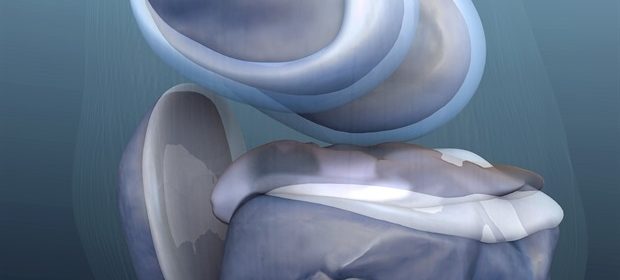Prevention of knee arthroplasty

Knee arthroplasty or knee replacement is a major surgery.
Although rare, there are risks associated with this surgery. Patients need to be counselled before the surgery about the possible benefits and risks of the surgery. Knee arthroplasty is usually done in patients with knee osteoarthritis.
Preventing this surgery usually means arresting the progress of osteoarthritis and opting for less invasive therapies for the condition.
Although knee replacement may be performed for adults of all ages, in the young and physically active individuals it is wiser to delay the operation since the artificial knee is more likely to wear out.
A knee replacement is typically recommended for older, less active people.
Possible methods by which knee arthroplasty may be delayed or avoided include pain management, weight loss and so forth. (1-5)
Adequate pain management
In most patients with osteoarthritis, surgery is the last option. This is usually chosen because of extreme pain even due to mild exertion or at rest.
Adequate management of pain is one of the methods by which knee arthroplasty can be delayed.
This should include oral drugs such as non-steroidal anti-inflammatory drugs (NSAIDs) like Diclofenac, Paracetamol, Ibuprofen etc.
Other drugs include locally applied agents like Capsaicin or cream or spray forms of NSAIDs.
In severe cases opioids group of drugs like Morphine or Tramadol are administered for adequate pain relief.
Weight loss
The knee bears the weight of the whole body. The progression of osteoarthritis may be stopped or delayed by reducing weight.
Regular physiotherapy and knee exercises
Early institution of knee exercises help in improving the mobility of the knee joints and delay the progression of osteoarthritis.
These have multiple benefits like reducing stiffness, increasing mobility, strengthening muscles of the leg etc.
Exercises of benefit include local muscle strengthening and aerobic exercises.
Use of walking aids
Use of walking aids and occupational therapy to help with daily activities may be attempted in order to delay knee replacement surgery.
Walking aids include adjusted shoes and putting braces over the affected joint to help in movement.
Arthroscopic washout and debridement
One alternative surgery to knee arthroplasty includes Arthroscopic washout and debridement.
An arthroscope is a fiber optic device that has a camera on its tip. It is inserted into the joint space through small incisions in the knee.
The tube is used to wash out the knee joint with saline water. This clears bits of bone or cartilage and eases the joint to improve mobility.
Microfractures
Some surgeons perform a surgical procedure called microfractures. In this surgery the surgeon makes small holes on the surface layer of bone.
This stimulates the bone and cartilage to grow and replace the damaged area. This is helpful for patients with a small area of damaged cartilage.
Autologous chondrocyte implantation (ACI)
This is a new form of cell based therapy. Stem cells from the patient himself or herself are taken and grown in the laboratory to form cartilage cells.
This is injected into the damaged joint. This is still and experimental procedure and unavailable to the general population.
Other therapies
Other therapies include:
- Steroid injections into the joint may be tried to reduce joint inflammation and provide relief.
- Replacement of damaged cartilage with an artificial cartilage.
- Osteotomy involves cutting off the affected part and realignment of the joint so that the weight of the body rests on a different part of the shin bone rather than the damaged part.
- There are other alternatives such as electrophyscial therapies like laser therapy, transcutaneous electrical nerve stimulation (TENS) and ultrasound.
With these energy is infused into the damaged tissue causing physical changes in the tissue. TENS produces pulsing currents which are delivered via electrodes placed over the skin. These currents can activate specific nerve fibres to cause pain relief.
Sources
- www.patient.co.uk/…/…oint-Replacements-What-a-GP-Needs-to-Know.htm
- http://www.nwlh.nhs.uk/services/Resources/20_KNEE_-_FINAL_VERSION.pdf
- www.wwl.nhs.uk/…/FT2_Total_Knee_Replacement.pdf
- http://www.nice.org.uk/nicemedia/live/11926/39720/39720.pdf
- www.nhs.uk/Conditions/Knee-replacement/Pages/Why-it-is-necessary.aspx
Further Reading
- All Knee Arthroplasty Content
- What is knee arthroplasty?
- When is knee arthroplasty needed?
- Risks associated with knee arthroplasty
- Recovery from knee arthroplasty
Last Updated: Jun 5, 2019

Written by
Dr. Ananya Mandal
Dr. Ananya Mandal is a doctor by profession, lecturer by vocation and a medical writer by passion. She specialized in Clinical Pharmacology after her bachelor's (MBBS). For her, health communication is not just writing complicated reviews for professionals but making medical knowledge understandable and available to the general public as well.
Source: Read Full Article